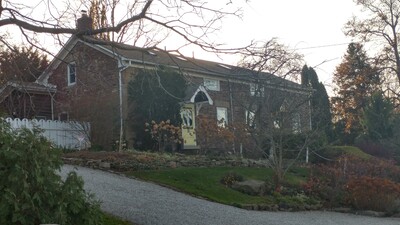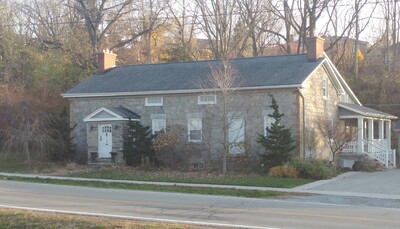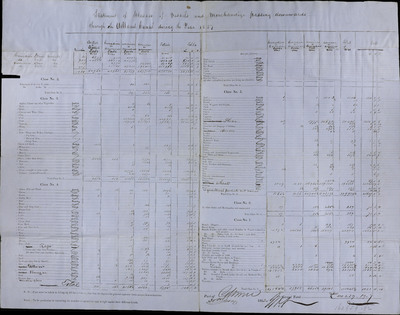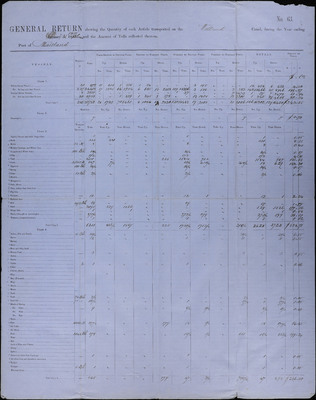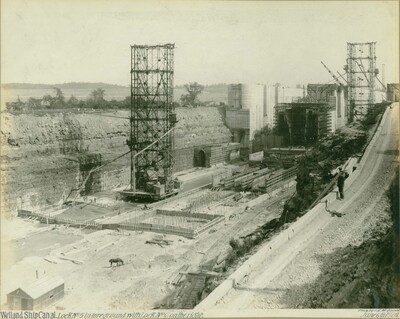Operation
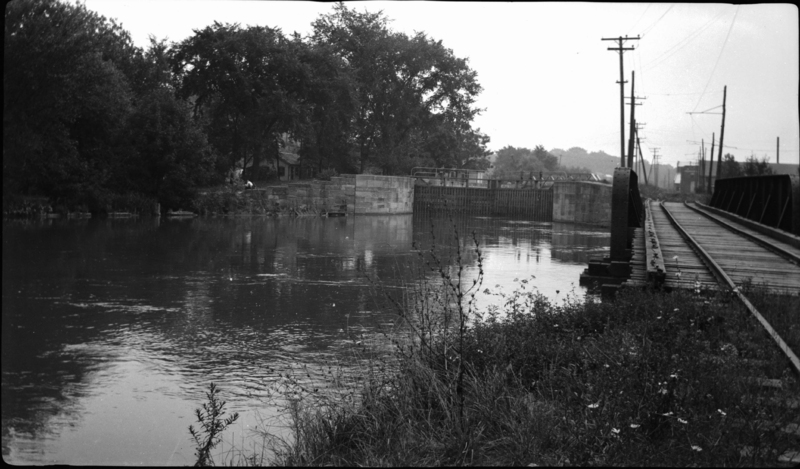
Second Welland Canal at Lock 2. This image is from the Ivan S. Brookes fonds.
Locks
One of the challenges in the construction of the Welland Canal was the difference in elevation between Lake Ontario and Lake Erie. The Lake Erie terminus of the canal is 326 feet (99 metres) higher than the Lake Ontario terminus. To compensate for this, a series of locks were built to move ships up or down, depending on which way they were travelling.
Initially, these locks were operated by locktenders. In 1846, the canal's chief engineer proposed that housing for the locktenders should be provided in close proximity to the locks they operated. While many of these houses are no longer standing, a few examples remain.
Similar to locktenders, bridgetenders were employed to operate the swing bridges over the canal. A bridgetenders house on Merritt Street in Welland is still standing and has been designated a historic place under the Ontario Heritage Act.
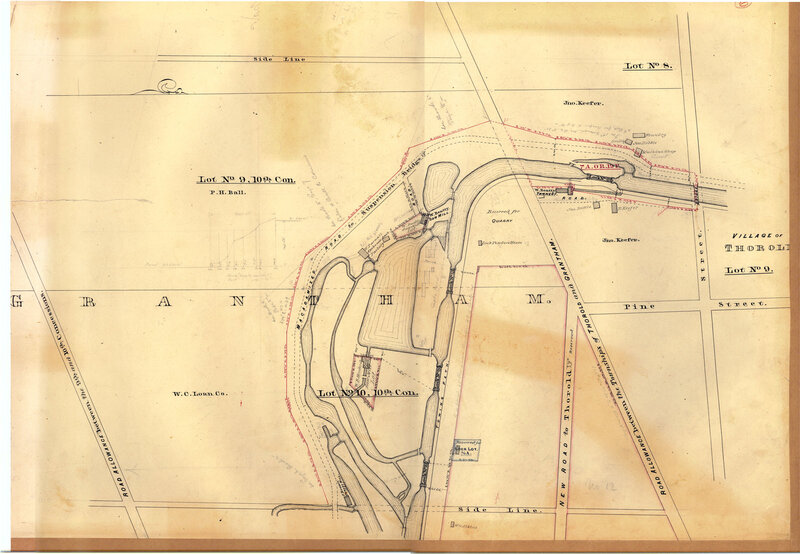
The second Welland canal in south Merritton, showing locks 19, 20, 21 and 22 (numbered from the bottom). The locktenders house can be seen just above lock 21 to the right of the canal, just before the canal bends, ca. 1855. This plan is part of the Welland Canal / St. Lawrence Seaway Authority fonds.
Shipping and Tolls
Locktenders or other canal staff would also collect fees from ships, record the number and types of vessels passing through the canal, and monitor the passage of canal traffic. The following documents record some of this information. Many other similar documents can be found in the Woodruff Family fonds.
Twin Flight Locks
With the construction of each Welland Canal, the number of locks was reduced. By the time the fourth Welland Canal opened in 1932, there were just 8 locks remaining in the entire canal.
One of the most notable engineering marvels of the Welland Ship Canal are the twin flight locks in Thorold. These locks allow ships to ascend and descend the escarpment. The flight locks consist of locks number 4, 5 and 6, and provide a total lift of almost 140 feet. The locks are twinned so that ships travelling in opposite directions can traverse the escarpment at the same time.
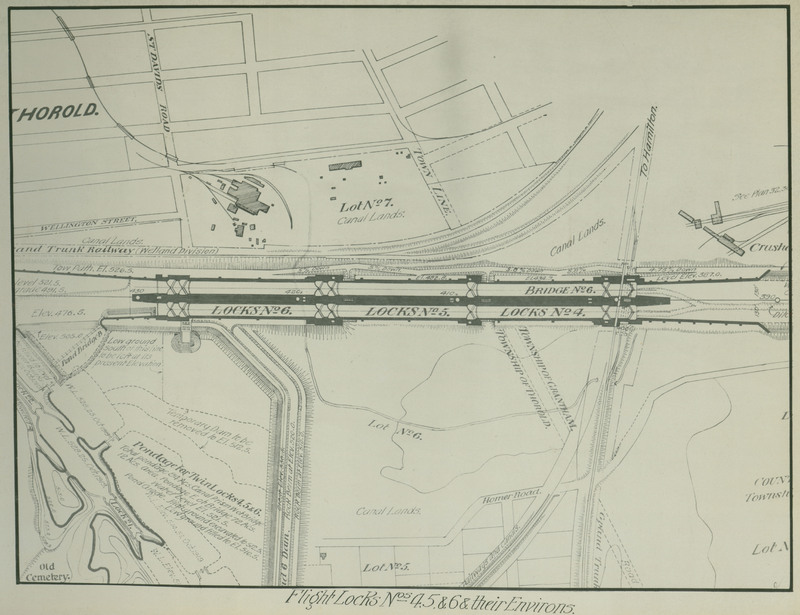
Plan of Flight Lock 4, 5, and 6, and their Environs from the Sykes fonds scrapbook.
